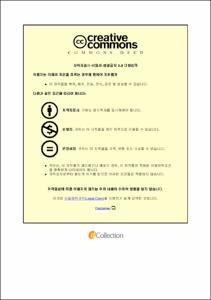청소년 학습문제 진단 검사 개발
- Alternative Title
- The Development of Learning Problem Diagnosis Test for Adolescent
- Abstract
- 본 연구는 진단분류모형(Diagnosis Classification Model: DCM)을 적용하여 인지적, 정의적, 행동적 영역을 포괄한 청소년용 학습문제진단 검사를 개발하는데 있다
본 연구를 위해 첫째, 문헌 고찰을 통해 청소년 학습문제의 하위요인 추출하고 8명의 교육 및 상담 전문가를 대상으로 3차례에 걸친 델파이 검증을 실시하여 예비문항의 내용타당도를 검증하였다. 둘째, 하위요인과 문항 간의 관계를 Q행렬로 작성하고, 자카드 계수를 산출하여 Q행렬 타당도를 검증하였다. 셋째, 중·고등학생 536명을 대상으로 72개의 예비문항에 대한 설문을 실시하였다. 응답자료는 보상적, 비결합적 가정을 기반한 DINO 모형(Noisy Input, Deterministic ‘Or' gate model)을 적용하여 문항 모수치(슬립모수, 추측모수)를 확인하여 최종문항을 선정하였다. 끝으로 인구통계학적 특성에 따른 하위요인 별 학습문제 보유 비율의 집단 간 차이를 비교하였다. 자료분석은 Excel 2016, SPSS 21. 및 R-software version 4.0.1.이 사용되었다.
본 연구의 결과 첫째, DINO 모형을 적용하여 문항별 슬립, 게스 모수치를 추정한 결과 변별력이 떨어지는 17문항을 삭제하여 총 55문항이 선정되었다. 학습문제 진단 검사의 인지적 영역에는 선수학습, 인지전략, 메타인지전략이, 정의적 영역에는 불안, 우울, 학습흥미, 목표의식, 학업적 자기효능감이, 행동적 영역에는 환경조성, 시간관리, 자원활용의 총 11개의 하위영역이 도출되었다. 둘째, 개인별 문항반응패턴과 학습문제 보유 확률을 제시하고, 속성 보유에 따른 요인별 개인 프로파일을 제시하여 검사 활용성을 높였다. 셋째, 청소년들의 학습문제 하위속성 패턴 분석을 통해 학습문제 잠재집단을 확인한 결과. 모든 하위요인에서 문제를 보유하지 않은 집단의 비율이 9%으로 가장 높게 나타났고, 한 가지 이상의 요인에서 학습문제를 가지고 있는 잠재집단의 비율이 91%였다. 넷째, 인구통계학적 특성에 따라 집단 간 학습문제 보유의 차이가 있는 것으로 나타났다.
본 연구의 의의는 진단분류모형을 심리검사 개발에 적용하여, 검사의 길이가 짧으면서도 검사 해석이 쉽고, 활용이 용이한 검사도구를 개발한데 있다. 끝으로 본 연구결과를 토대로 후속연구에 대한 제언과 시사점을 논의하였다.
The purpose of this study is to develop a learning problem diagnosis test for adolescent which cover cognitive, affective, and behavioral domains by applying the DCM (Diagnosis Classification Model).
To do so, first, this study examined related literature to extract the attributes of adolescents’ learning problem and create preliminary questions and conducted three Delphi tests on 8 education and counseling experts to verify the validity of preliminary questions. Second, this research verified the validity of Q matrix by writing the relationship between sub-factors and questions in a Q matrix by calculating the jacquard coefficient. Third, the study conducted a survey of the 72 preliminary questions on 536 middle and high school students, and selected the final questions for the response data by checking the item parameter (slip parameter, geuss parameter) by applying the DINO model (Noisy Input, Deterministic ‘Or’ gate model) based on the compensatory and non-combination assumptions. Finally, this study compared the differences between the groups of the retention rate of learning problems by sub-factors according to demographic characteristics. Excel 2.0 and R-software version 2.15 were used for statistical processing,
According to the results, this research first selected a total of 55 items by deleting 17 items with poor discrimination power applying DINO model. This research extracted a total of 11 sub-factors: Advance learning, cognitive strategy, and metacognitive strategy in the cognitive domain of learning problem diagnosis test; anxiety, depression, learning interest, goal consciousness, and academic self-efficacy in the affective domain; and environment creation, time management, and resource use in the behavioral domain. Second, the study raised the test utilization by presenting the response patter for each individual, the retention rate of learning problems, and the personal profile for each factor according to the retention of attributes. Third, the study examined the potential group of learning problems by analyzing the sub-attribute patterns of learning problems of adolescents. In all the sub-factors, the proportion of group not having problems was the highest at 9%, and the proportion of potential groups with learning problems in one or more factors was 91%. Fourth, the study showed that there were differences in the retention of learning problems among the groups according to the students’ demographic characteristics.
The significance of this study is that it developed a testing tool that is short but easy to interpret and convenient to use by applying the DCM in the development of psychological test. Based on the results, the implications and limitations of this study were discussed, and the future research directions were suggested.
- Issued Date
- 2020
- Awarded Date
- 2020. 8
- Type
- Dissertation
- Publisher
- 부경대학교
- Affiliation
- 부경대학교 대학원
- Department
- 대학원 교육컨설팅학과
- Advisor
- 천성문
- Table Of Contents
- I. 서 론 1
1. 연구의 필요성 및 목적 1
2. 연구문제 10
3. 용어의 정의 10
Ⅱ. 이론적 배경 12
1. 학습문제의 개념 12
2 학습문제의 구성요소 17
3. 학습관련 선행검사 42
4. 학습문제 진단을 위한 진단분류모형 52
Ⅲ. 방 법 63
1. 연구대상 63
2. 절차 67
3. 자료처리 71
Ⅳ. 결 과 76
Ⅴ. 논 의 114
참고문헌 132
Abstract 167
부 록 169
부록 1. 기초 예비문항에 대한 2차 델파이 검증 결과 169
부록 2. 청소년 학습문제 진단 검사 예비 72문항 설문지 176
- Degree
- Doctor
- Files in This Item:
-
-
Download
 청소년 학습문제 진단 검사 개발.pdf
기타 데이터 / 1.15 MB / Adobe PDF
청소년 학습문제 진단 검사 개발.pdf
기타 데이터 / 1.15 MB / Adobe PDF
-
Items in Repository are protected by copyright, with all rights reserved, unless otherwise indicated.